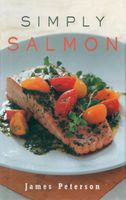Advertisement
Farmed Salmon: Some Ifs, Ands, or Buts
Published 2001
While farmed salmon has provided us with a plentiful source of fresh, beautiful salmon, modern salmon farming techniques often have a negative environmental impact. Salmon that is farmed in open pens—the most common method used today—release a number of contaminants into the surrounding water and can do damage to the surrounding eco-system. As home cooks and restaurant chefs become more aware of this problem, we can insist on more environmentally friendly salmon farming methods. One such method uses a closed pen with its own attached water treatment system. Another method consists of acclimatizing young salmon to salt water in open pens but then releasing them where they can grow to maturity in the wild and where they can be bought using traditional farming methods. It is also possible to avoid farmed salmon altogether and buy only wild Pacific salmon, some of which is in season for more than half the year. When fresh wild salmon is not available, high quality “frozen at sea (FAS)” can be used during the off season.

